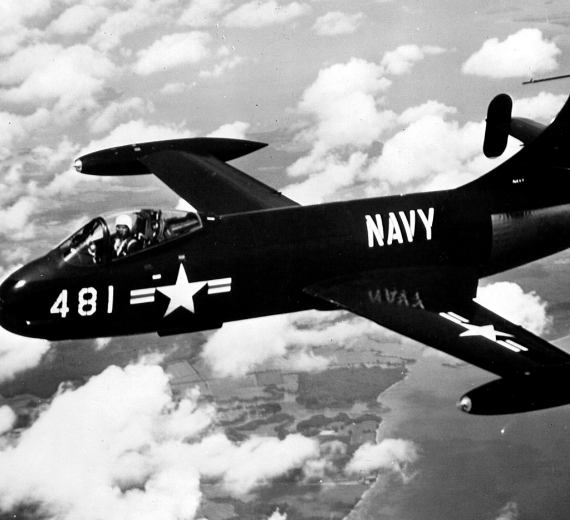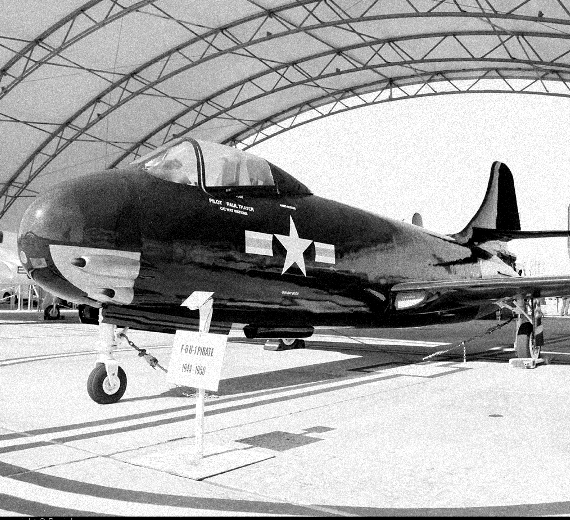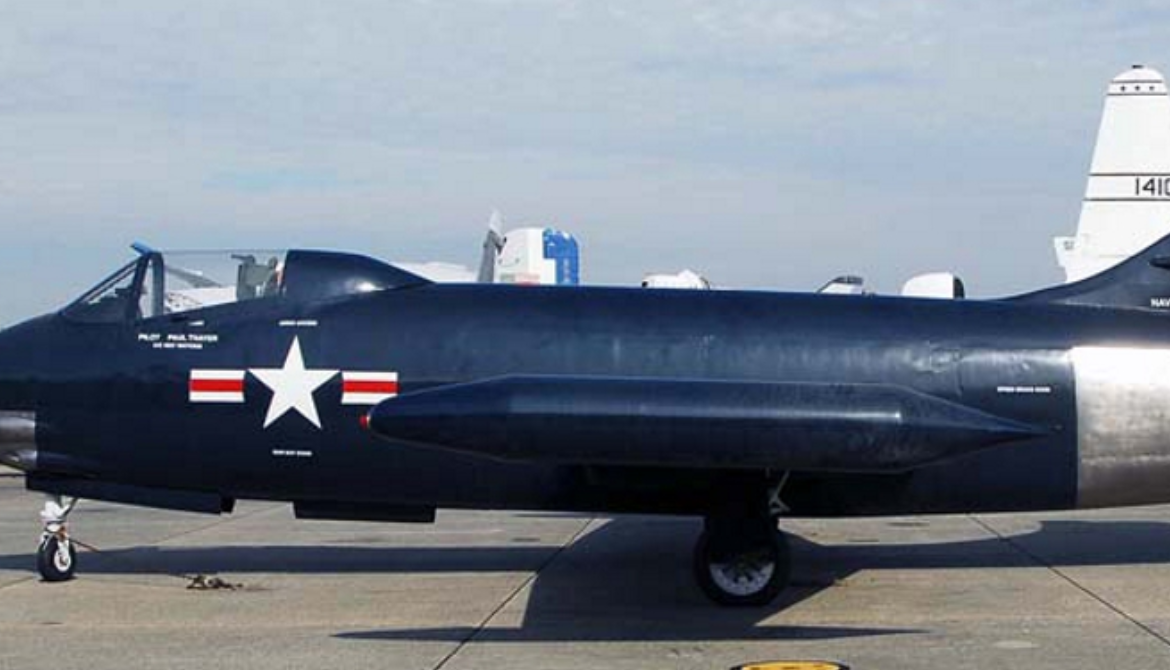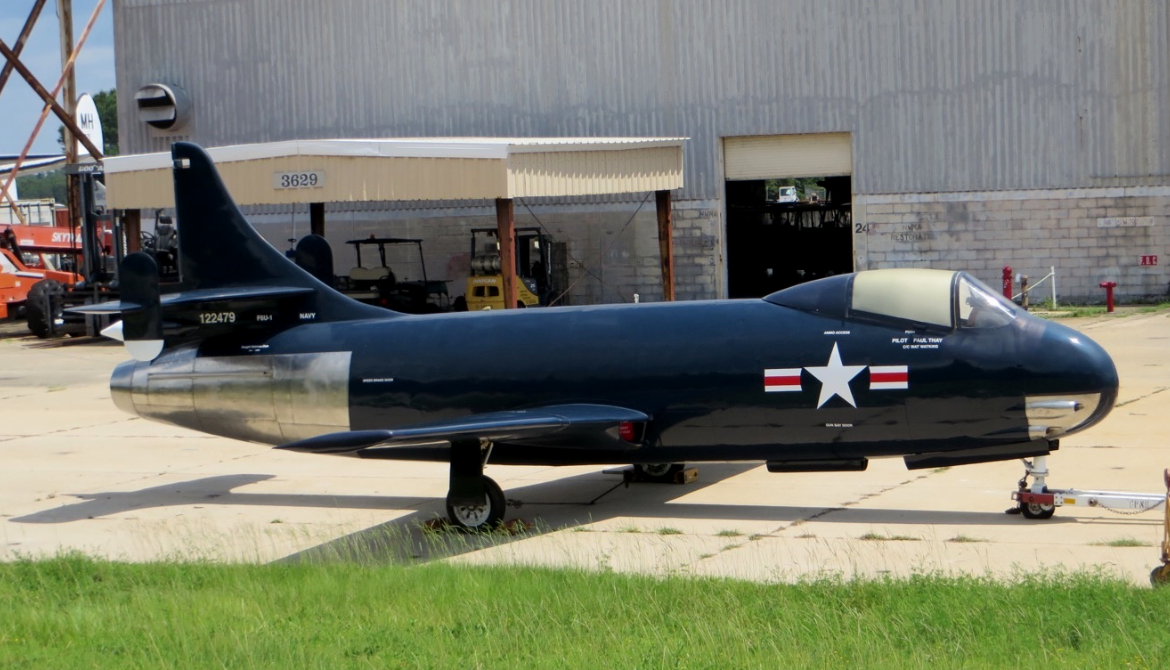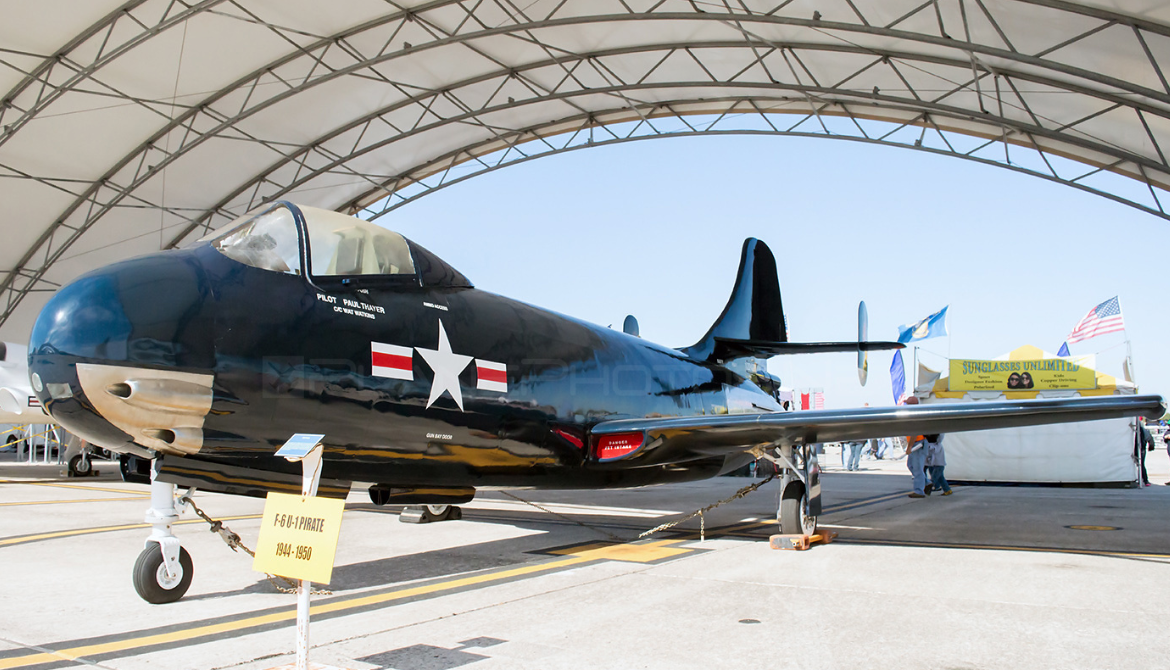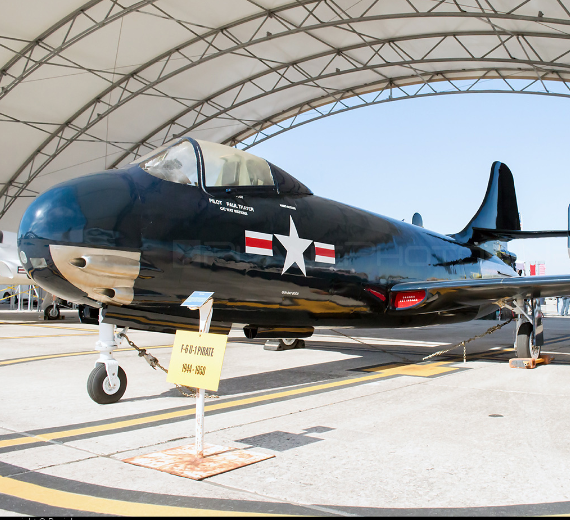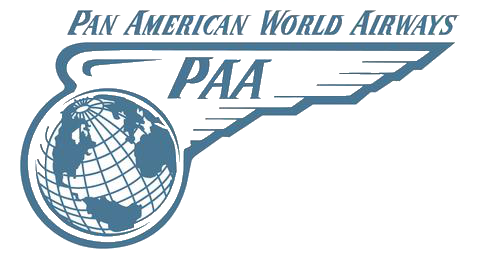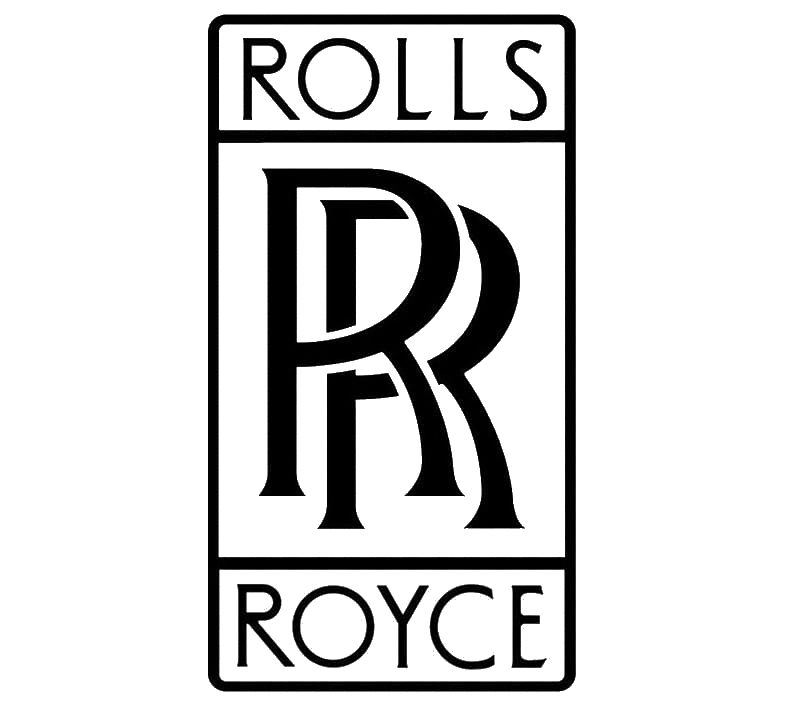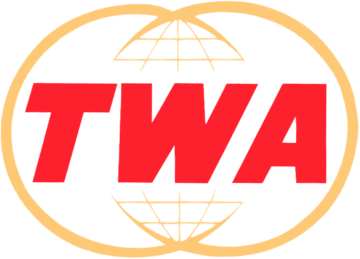.
History Ling-Temco-Vought
F6U Pirate

The Vought F6U Pirate was the Vought company's first jet fighter, designed for the United States Navy during the mid-1940s. Although pioneering the use of turbojet power as the first naval fighter with an afterburner and composite material construction, the aircraft proved to be underpowered and was judged unsuitable for combat. None were ever issued to operational squadrons and they were relegated to development, training, and test roles before they were withdrawn from service in 1950.
A specification was issued by the Navy's Bureau of Aeronautics (BuAer) for a single-seat, carrier-based fighter powered by a Westinghouse 24C (later J34) axial turbojet on 5 September 1944. Chance Vought was awarded a contract for three V-340 (company designation) prototypes on 29 December 1944.

A specification was issued by the Navy's Bureau of Aeronautics (BuAer) for a single-seat, carrier-based fighter powered by a Westinghouse 24C (later J34) axial turbojet on 5 September 1944. Chance Vought was awarded a contract for three V-340 (company designation) prototypes on 29 December 1944.
The XF6U was a small aircraft with tricycle undercarriage and with straight wings and tail surfaces. The wings were short enough that they did not need to fold. To fit more aircraft into crowded hangars, the nose gear could be retracted and the aircraft's weight would rest on a small wheel attached by the ground crew. This raised the tail up so that it could overlap the nose of the aircraft behind it, allowing more aircraft to fit into available hangar space. The turbojet engine was mounted in the rear fuselage and was fed by ducts in each wing root.
The most unusual feature of the aircraft was its use of "Metalite" for its skin. This was made of balsa, sandwiched between two thin sheets of aluminum. "Fabrilite" was also used for the surfaces of the vertical stabilizer and rudder ; this was similar to Metalite but used fiberglass instead of aluminum. Two fuel tanks were fitted in the center of the fuselage; the forward tank, ahead of the wing, contained 220 US gallons (830 L; 180 imp gal) and the rear tank, 150 US gallons (570 L; 120 imp gal). These were supplemented by two jettisonable 140-US-gallon (530 L; 120 imp gal) tip tanks . The cockpit was well forward and was provided with a bubble canopy which gave the pilot good visibility. He was provided with a Mk 6 lead-computing gyro gunsight . Underneath the cockpit were four 20 mm (0.79 in) M3 autocannon . Their 600 rounds of ammunition were carried behind the pilot. The empty casings of the two upper guns were retained in the aircraft, while those from the two lower guns were ejected overboard. .0
KmCeiling
0
KmCombat RANGE
0
Km/hAircraft Speed
0
Max Crew
Photo Gallery
Ling-Temco-Vought
F6U Pirate


Ling-Temco-Vought
F6U Pirate
General Info
-
-
- Crew: 1
- Length: 37 ft 7 in (11.46 m)
- Wingspan: 32 ft 10 in (10 m)
- Height: 12 ft 11 in (3.39 m)
- Wing area: 203.4 sq ft (18.9 m2)
-
Powerplant
-
- Empty weight: (3,320 kg)
- Gross weight: (5,850 kg)
- Powerplant: 1 × Westinghouse J34-WE-30A turbojet, 3,150 lbf (14.0 kN) thrust dry, 4,224 lbf (18.79 kN) with afterburner
-
Performance
- Maximum speed: 596 mph (959 km/h
- Range: 1,170 mi (1,880 km,
- Service ceiling: (14,100 m)
- Rate of climb: 8,060 ft/min
- Thrust/weight: 0.327
.
Links to Youtube & Others
The aircraft ended up being used primarily to develop arresting gear and barriers, but were used operationally for a short time by at least one
Ling-Temco-Vought
F6U Pirate
In 1947, before the flight testing of the prototypes was completed, 30 production aircraft were ordered.
Youtube Link
The aircraft ended up being used primarily to develop arresting gear and barriers, but were used operationally for a short time by at least one
